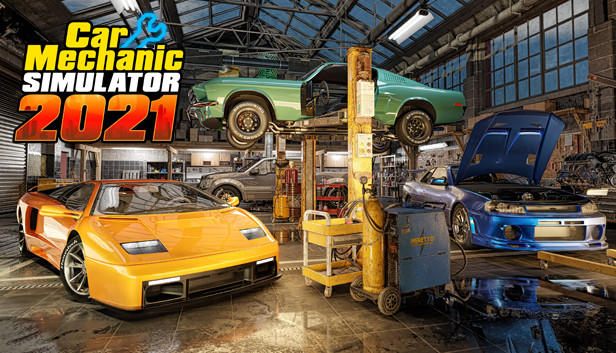
You should consider many factors before you buy a classic car. These include rust prevention, roadworthiness, insurance and regular maintenance. Maintaining a classic car is expensive. Be sure to include this cost in your budget. Murphy's Law also applies to classic cars, so expect to have to pay for routine maintenance and repair more often. For more information on classic cars, read this article.
Questions to ask before buying a classic car
They aren't perfect. You can find small and large problems with classic cars. Sometimes sellers won't tell you about these problems, because they know that an inspection will reveal them. If you are looking to purchase a classic car you need to ask about these issues. You might find that there are significant problems. This could indicate that the seller is trying to hide something. A lemon could be in your future if you don't get the seller to disclose any problems.

Maintaining a classic car roadworthy.
If you own a classic vehicle, you will be familiar with the effort involved in maintaining it. The UK Department of Transport (DfT), exempted older vehicles of annual MoT tests due to their historic value. You will still need replacement parts to keep your older vehicle roadworthy. It's a good idea to learn what parts are available and where to get them. If you aren't sure where to start, the Internet is a great place.
How to inspect a classic car for signs of rust
A classic car should be inspected for rust before it is bought. You should look at all the body panels, which can sometimes hide rust damage due to previous bodywork. Use a magnet for determining the extent of the corrosion damage. If the magnet sticks to different areas of the body, it could indicate that the rust is an issue. To examine your car, you should contact a mechanic.
A classic car can be kept for less than one year
During the winter, many collectors turn to temporary storage planning. This allows classic cars not to cause damage to the engine and allows them to remain in storage for short periods. It will keep your classic car in top condition even if you don’t plan on driving it for more than one year. The best rule of thumb to keep your classic car in good condition is to start it every few months.

Investing In A Classic Car
A classic car has a high investment potential, but it's not for everyone. Whether you're after a V12 or a compact and purposeful vehicle, investing in a classic car represents a piece of art and history. Although this is not an easy investment, it is worth the effort if your passion is vintage cars and you are willing to do the work.
FAQ
What are the qualifications for an automotive technician
You must have completed high school or GED with good grades in maths and English. It is also necessary to be able both to read and to write. You will need to pass a written test and then go through a series of practical exams before being allowed to start work.
What is the best way to learn about car mechanics
For an auto mechanic job, you don’t have to be an expert in cars. You only need to know how to fix them. It's why many people begin to fix things by fitting brake pads or changing tires.
You need to be able read and comprehend diagrams, follow written instructions and adhere to basic principles of good practice. You'll also need to be able to judge whether parts need replacing or repairing.
It is important to remember that proper training and guidance are essential for anyone who attempts to repair vehicles. This is especially true if you deal with expensive components such as engines or transmissions.
Even though you don't need to be an expert on cars, it is important to understand the fundamentals of mechanical engineering and physical physics. This is how you understand the mechanisms behind engines and brakes.
It's also worth noting that you'll need to be prepared to deal with all sorts of situations. For instance, you might find yourself in charge of a vehicle that has been in a serious accident. You will also need to be able to deal with accidents and breakdowns.
It is important to be open to learning new skills quickly. Not only will you need to be capable of diagnosing problems, but you also need to be able perform simple maintenance tasks like tightening nuts.
What is the length of an apprenticeship as an automotive mechanic?
It takes three years to complete an apprenticeship as an automotive mechanic. The apprenticeship includes two years studying at school and two more as an apprentice. The first year of training is spent in the trade. This includes theory and practical skills as well as safety procedures. During this time, you'll also learn how to use tools safely and efficiently. After you have completed the first year of training, you will be able to spend an additional year on-the job learning different trades. You will have the opportunity for formal training during these years.
The final year of the program is spent gaining qualifications and becoming certified in the field. These include NVQs (National Vocational Qualifications), which are awarded after passing exams covering specific topics within the industry. There are also HNCs (Higher National Certificates), which cover general subjects like management, business administration, customer service, and more. Finally, there are City & Guilds certificates that are offered for those who wish to become qualified in certain trades.
Is automotive mechanic a promising career?
The automotive industry is full of exciting opportunities for those who are dedicated to excellence. The best way to succeed in this field is by working hard and learning as much as possible from others.
Because you will be spending most of your time communicating with customers and employees, you will need excellent communication skills. You will need to be able and willing travel for work, making it more difficult to commute.
If you're interested in pursuing a career in automotive, consider taking classes at community colleges and universities. Many schools offer programs specific to students interested in sales, auto repair, or customer service.
You should choose to study mechanical engineering if you want to get a degree. It is possible to earn a bachelor’s degree in only four years.
Many employers will also hire graduates straight from school. Therefore, it is a good idea to look for employment while still pursuing part-time studies.
After you complete your education, you may need to undergo some type of training before you can become an automotive technician.
This means you'll need to pass exams such as the Automotive Service Excellence (ASE) certification exam. This test covers topics like engine maintenance, brakes system, suspension, and many other subjects.
After passing the ASE exam, you can apply for a National Institute for Automotive Service Excellence license.
A license permits you to repair private vehicles. In exchange, you'll receive compensation based on the number of services performed.
Not all states require licensing. However, licensing is required for anyone who plans to work outside the home state.
Some states will not issue licenses until an individual has completed certain training. If this is you, you may need another option.
Are you a mechanic or a technician? Can I do part-time studies?
It is not essential, but it is helpful. Employers will prefer candidates who have completed a degree. It shows that you've put the effort in and have done everything possible to succeed.
It doesn't mean that you can't work while you study. Some universities allow students the flexibility to finish coursework during summer vacations and resume their studies later in year. Some universities allow students to take part-time classes throughout the year.
What is the distinction between a mechanic or an automotive technician?
Both are related, but they are not the same. A mechanic repairs cars while an automotive technician does maintenance on them.
A mechanic must be skilled in manual dexterity and able to complete simple tasks quickly. They should be able to accurately diagnose problems and repair them efficiently.
An automotive technician is required to have more technical knowledge than a mechanic. They need to be able use tools such drills and wrenches, and read blueprints.
They must also be able perform complex procedures safely. They must also be familiar with different types of engines and electrical systems.
They must also be capable of understanding how parts interact.
As a result, a mechanic usually earns less money than an automotive technician. Both careers have many options.
Statistics
- According to the BLS, the median annual salary for automotive service technicians and mechanics in the United States was $44,050 in May 2020. (uti.edu)
- 52% of Mechanics in the United States think their salaries are enough for the cost of living in their area. (indeed.com)
- According to the BLS, total auto technician employment is expected to exceed 705,000 by 2030. (uti.edu)
External Links
How To
How to correctly diagnose your vehicle for repairs
The symptoms of your vehicle are the first thing you need to look at in order to determine whether it is in dire need of repairs. Then, follow these steps to diagnose your vehicle properly.
-
Check engine lights. Make sure to check all dashboard indicators like the engine light indicator (oil pressure gauge), the battery indicator (battery light indicator), and the RPM indicator (rpm gauge). If they have been flashing for more days than usual, it could be a sign that something is wrong with the vehicle.
-
Check the treads of your tires. Tires with worn treads could cause problems when handling or braking. Also, inspect the treads of your wheels. They should be smooth and clean. This can be done by removing the wheels from the vehicle and taking them off. You can check the tread wear with a flashlight.
-
Monitor the level and consistency of your brake fluid. You must keep track on the level of brake fluid in your vehicle. This helps ensure that your brakes operate properly. Low brake fluid levels can cause brake failure when you apply pressure.
-
Test the suspension system. It is common for vehicles to have a suspension system which absorbs shocks or vibrations. It improves control and allows for smoother accelerations or decelerations. Your vehicle might feel wobbly, or shake uncontrollably if it has a bad suspension. To determine whether your vehicle may have a suspension issue, you can try to put weight on the rear or front axle and watch the movement.
-
Examine the steering column. The steering column is used to link the steering wheel with the rest of vehicle's components. The steering column can often be damaged by an accident. It is recommended to replace any steering column that feels loose, or shakey.
-
Observe the exhaust pipe. Exhaust pipes move gases from combustion chamber to atmosphere. If the exhaust pipe is damaged or leaks, harmful fumes can enter your cabin. Additionally, your tailpipe should be fixed immediately if it is bent.
-
Check under the hood. Look underneath your hood to see if anything looks strange. Leakage of fluids in your engine could indicate that it is leaking. In addition, if you notice an unusual smell coming from your engine compartment, you should contact a professional technician.
-
Check the air filter. The air filter in your vehicle collects dirt and dust from the environment. A dirty filter can lead to a poor vehicle's performance. Replace your air filter regularly.
-
Verify the fan belt. The fan belt that connects your vehicle to the transmission is called the engine fan belt. The engine will not turn if the fan belt breaks. It is very easy to replace your belt. All you need are a screwdriver & pliers.
-
Verify the radiator hoses. The radiator hose transports water from radiator to engine. If the hose becomes damaged or cracked, hot liquid can be emitted onto the engine. You only need a pair of needle-nose pliers and a small wire brush to repair the hose.
-
Make sure you have the windshield wipers checked. Windshield wipers work by using electricity to remove rain and snow. If they stop working they could leave streaks behind on your window glass. Change the washer fluid to fix the problem.
-
Verify the condition of your battery cables. Batteries provide power to electrical systems inside your car. Always disconnect the negative wire before you replace batteries. Failure to do so can damage your alternator.
-
Check the headlights. The headlights provide illumination for the road ahead. It can lead to poor visibility if they aren't working properly. To determine if your bulbs are out of date, check them.
-
Always check your lights. The lights are there to warn other drivers if they approach you at night. You could be distracted and cause an accident if one does not work.
-
Inspect your brakes. Before you collide with another vehicle, brakes will slow down the car. You could lose control of the car and cause a crash if they don't work properly.
-
Change the oil. Oil keeps your engine lubricated. It prevents metal parts from rusting too quickly. It is recommended that the oil be changed every other month.